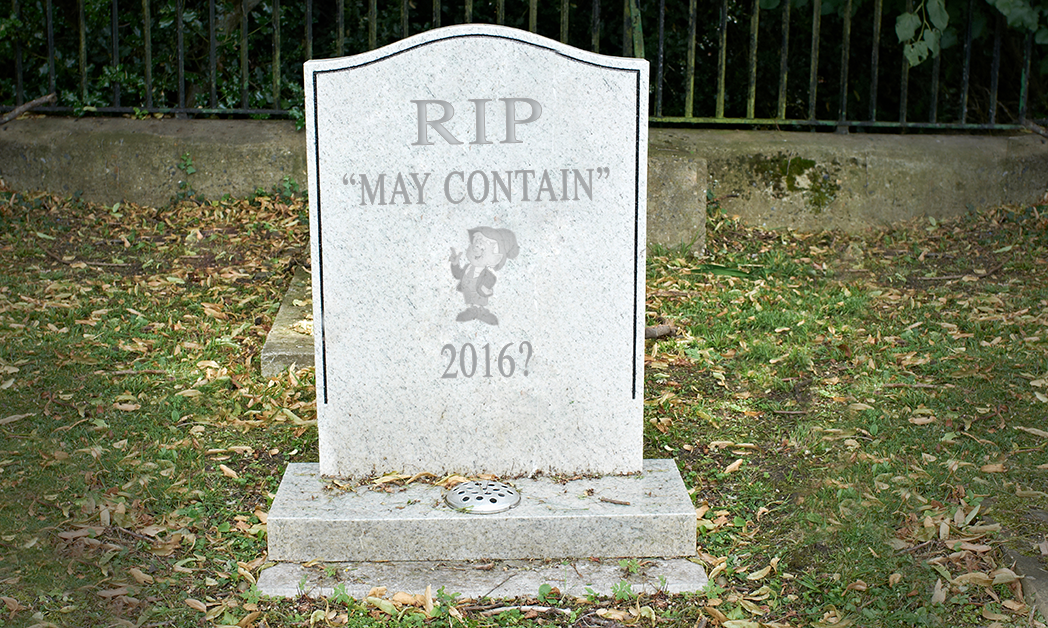Large food manufacturers are implementing fundamental changes in anticipation of Food Safety Modernization Act (FSMA) directives that take affect this September.
Prescribed by Current Good Manufacturing Practice, Hazard Analysis, and Risk-Based Preventive Controls for Human Food (HARPC), the new directives raise prevention of allergen cross-contact to the same level of concern as prevention of food-borne pathogens and other dangers, requiring increased scrutiny and documentation on the part of manufacturers.
This is of course a good thing, but as always, the devil is in the details.
The new directives mandate that the “Top 8 allergens” identified by FALCPA (peanuts, tree nuts, milk, eggs, wheat, soy, fish, and crustacean shellfish) must either be ingredients of the product and identified as such, or the manufacturer must take extra care (and cost) to ensure that there is no cross-contact with them. There is no middle ground or “out” for the manufacturer, which is why we believe “May contain” type label advisories are heading for extinction. And that poses a problem, at least in the short term.
To see why, let’s go back to Kellogg’s surprise announcement in May that they would begin adding peanut flour to eight Keebler and Austin cracker varieties that many had considered safe for peanut allergy.
Despite our petition and our articles challenging the company, Kellogg’s denied their decision had anything to do with the new directives by playing a semantic game, insisting they were complying with all directives of the FSMA (which we had not disputed.) Later, in response to a query by KPIX TV San Francisco, the company finally admitted the reason for adding traces of peanut flour to these products: it allowed them to list peanuts as an ingredient because they were manufactured on shared equipment. Here’s the report by Julie Watts of KPIX with Kellogg’s admission.
While we abhor Kellogg’s decision to add peanut flour to snacks frequently consumed by children with peanut allergies, the action points to a deficiency in the new directives that has already resulted in unintended consequences: companies, when faced with the added burden of instituting and documenting cross-contact prevention measures as dictated by HARPC, may instead choose to add trace amounts of the allergen to the product, as doing so makes the allergen an ingredient of the product and obviates the need for preventative cross-contact measures for that allergen.
Is that a good thing? On the positive side, it means that manufacturers will either take stricter measures to prevent cross-contact or add a trace amount of the allergen and list it in the ingredient list, thus eliminating the ambiguity that currently plagues us all. On the negative side, it means that if a manufacturer opts to take the easy way out, products that are manufactured on shared lines that previously may have contained traces of allergens like peanuts, tree nuts, milk, etc. will definitely have such traces going forward, and that in turn means these products will become more dangerous for people with food allergies that might inadvertently consume them.
A compromise that might have avoided the unintended consequences of companies like Kellogg’s adding traces of allergens to their products is to have offered them a third option: A mandatory “May contain” label advisory for any product made on shared equipment or in shared facilities that did not meet the FSMA threshold for cross-contact prevention. Such label advisories are voluntary today, rendering them ambiguous at best, but a definitively worded and located advisory statement included on all such products would have provided a way for manufacturers to meet the requirements of HARPC without resorting to the addition of allergens.
Complicating the transition to the new HARPC regime is timing: “small” and “very small” businesses (defined by their revenue and number of employees) have until September 2017 and 2018 to comply, while the remaining businesses (presumed “large”) must comply by this September.
What does this all mean for the consumer concerned with food allergy? As always, be sure to read the label every time you purchase a product, even products you’ve purchased before and presume to be safe. Contact the manufacturer with your questions, understand which questions to ask, and avoid manufacturers that are evasive or do not provide answers in a direct, forthright manner.
The market will dictate how companies ultimately respond to the new directives, but as we enter this transitionary phase that may last several years, be prepared for the unintended consequences.






Why *isnt* a May Contain mandatory? I’ve always wondered….and what about the snacks that seem to keep cropping up with “no nuts!” Proclaimed on the label, but a May Contain or Shared Equipment note in fine print? Why is that sort of thing legal? So misleading…
As a vegan, this is going to be a nightmare.